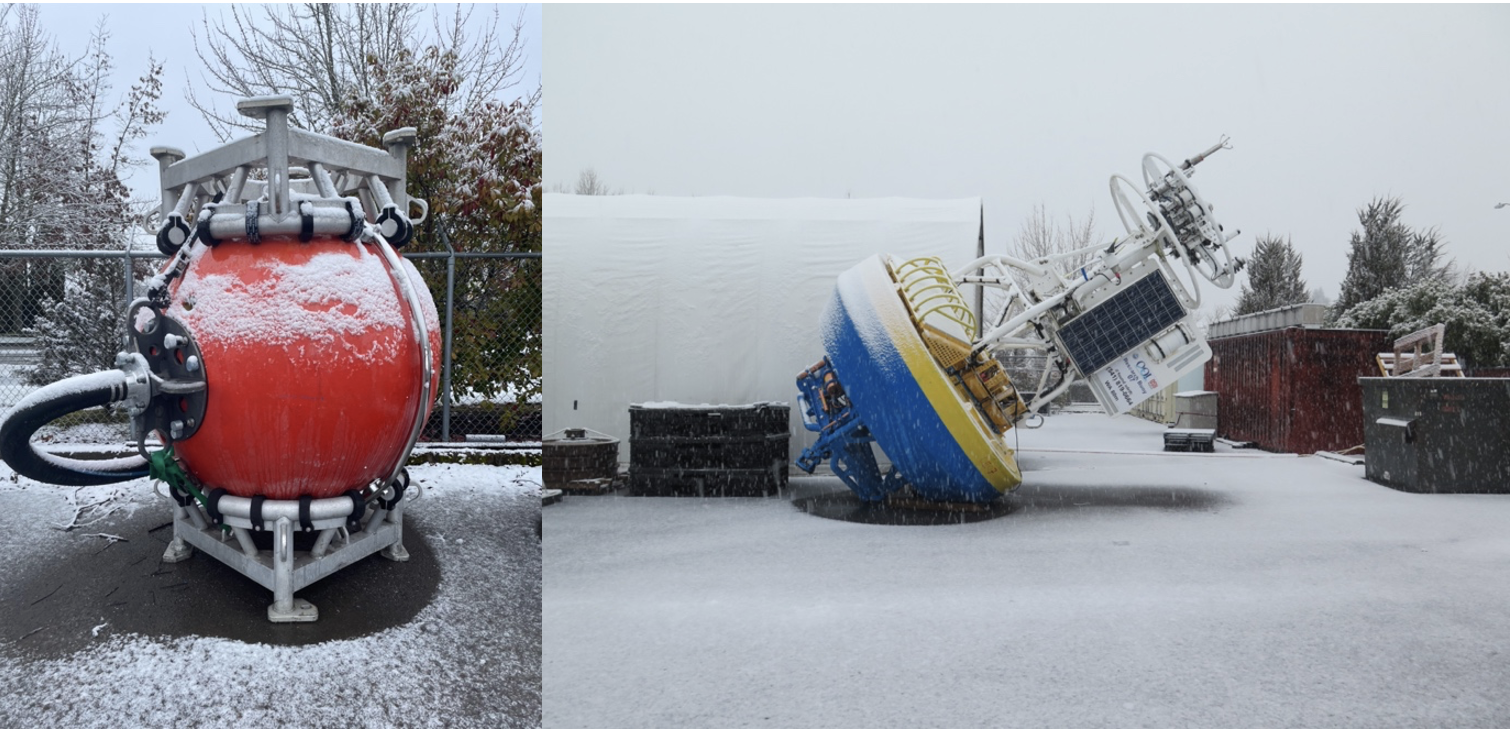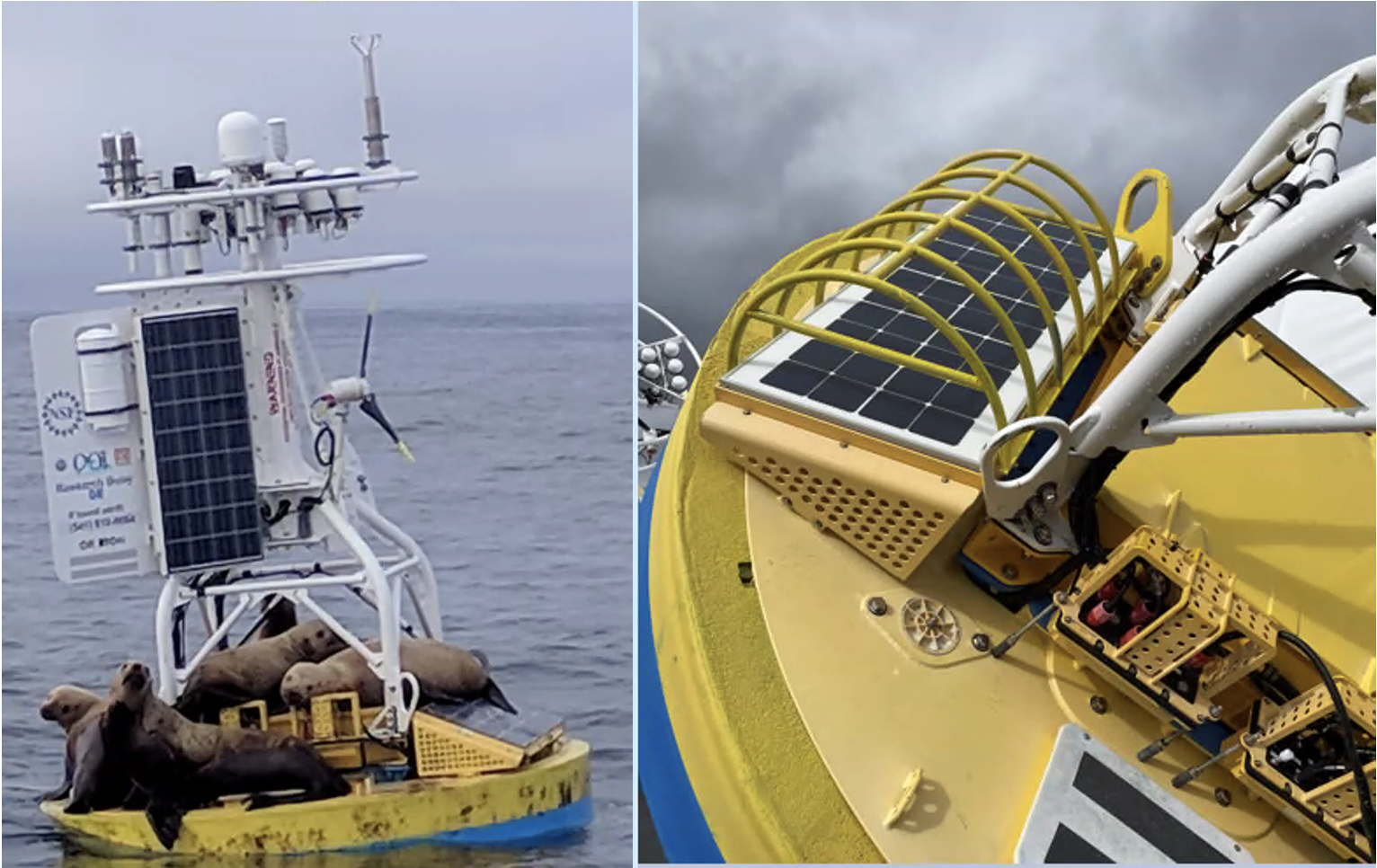Eighteenth Turn of the Coastal Endurance Array
On Tuesday March 7th, 11 hearty scientists and engineers from Oregon State University (OSU) are heading out to the northeast Pacific aboard the R/V Sikuliaq to recover and deploy (turn) the Coastal Endurance Array. For some of the team members, this will be the eighteenth time they have made this journey to ensure that the Coastal Endurance Array continues to report data from this important region.
The array is in an important region with coastal upwelling, where strong winds cause surface waters to be pushed offshore and water from the ocean depths is pulled up – or upwelled – to the surface to take its place. These regions comprise less than 5 percent of the ocean’s surface area, yet account for a quarter of the global fish catch. The Endurance Array has been collecting data in this region since 2016, which scientists have used to examine ocean health issues, including hypoxia, ocean acidification, and how they affect ocean life.

The Endurance team will be very busy during their 16-day expedition. Because of the size of the equipment, the expedition will occur in two legs so recovered equipment can be brought back to shore and replaced with equipment to be deployed. They intend to recover and deploy seven moorings and recover two gliders, while deploying a full contingent of six gliders. Three gliders will “fly” at shallow depths of 200 meters across the shelf. Another three will travel at 1000 meters depth offshore. Weather and seas permitting, the team also plans to deploy four coastal surface piercing profilers.
The team will also be conducting water sampling before and after each deployment. They will conduct CTD (conductivity, temperature, and depth) casts at the deployment/recovery sites and carry out shipboard sampling for field validation of the platforms and sensors that will remain in the water for the next six months.
Chief Scientist, Jonathan Fram, who will lead both legs of the expedition, said, “Endurance 18 is happening earlier than our usual spring expeditions, which means we are likely to face rough seas. We have a highly experienced team, the ship has an exceptional crew, and we’ll be on a weather-hardened ship, so we will be able to make the most of our time at sea. Platforms that can be deployed from a smaller vessel may be deferred to spring if there are long weather delays on this end-of-winter expedition.”
The team had already experienced some unexpected weather as a freak snowstorm covered the ocean observing equipment in the storage area in Corvallis. The team had to “clean off the cars,” so to speak, before loading the equipment onto trucks for transport to the dock in Newport, for loading on the ship.

In addition to OOI’s recovery and deployment operations, during leg two, University of South Carolina researcher Eric Tappa, will lead the recovery and deployment of a sediment trap adjacent to OOI’s Oregon Slope Base site. “This is an example of how OOI tries to maximize ship time by partnering with scientists and other partners and institutions to make full use of the time at sea. We are always open to discussing ways we might advance other scientific objectives,” added Fram. (See How to Participate for more information.)

During the expedition, two University-National Oceanographic Laboratory System (UNOLS) cruise volunteers will be onboard as well as two OSU undergraduates who are employed by OOI to help with the refurbishment of moorings. An OSU videographer will also be onboard to share the ongoing work. Bookmark this site and follow along on the journey.
